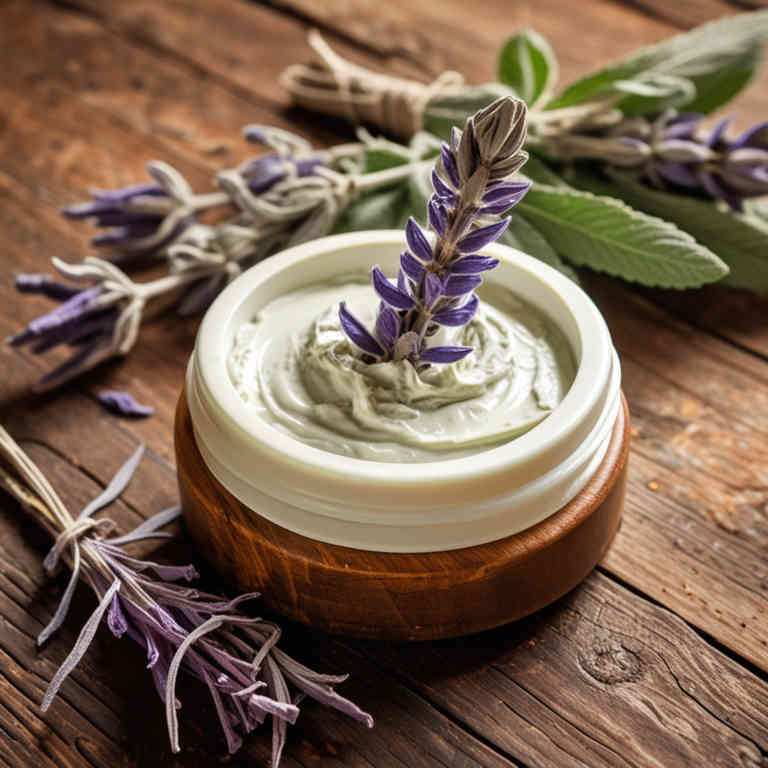Salvia officinalis cream for medicinal use

Salvia officinalis cream is a topical herbal preparation made from the leaves of the common sage plant.
It is traditionally used in herbalism to soothe skin irritations, reduce inflammation, and promote healing. The cream is often applied to minor wounds, burns, or insect bites due to its antimicrobial and astringent properties. Sage contains compounds like rosmarinic acid and flavonoids, which contribute to its therapeutic effects.
In holistic medicine, it is also used to support respiratory health when applied externally or in steam inhalation.
Uses
Salvia officinalis cream has been used to treat a variety of skin conditions and ailments throughout history.
Historically, it was valued in ancient civilizations such as Greece and Rome for its soothing and healing properties, often applied to wounds, sores, and inflamed skin. In traditional medicine, it was also used to alleviate digestive issues and promote respiratory health, though the cream form is more commonly associated with topical applications. Modern uses of the cream include its application for eczema, psoriasis, and as a natural remedy for muscle pain and inflammation due to its anti-inflammatory and antioxidant properties.
Today, it is widely available in herbal and natural health markets, continuing its legacy as a versatile and beneficial preparation.
Benefits
Salvia officinalis cream has health benefits such as reducing inflammation, soothing skin irritations, and promoting wound healing.
This cream is derived from the leaves of the common sage plant, which is known for its antioxidant and antimicrobial properties. It can help alleviate symptoms of eczema, psoriasis, and other skin conditions due to its soothing and anti-inflammatory effects. The active compounds in sage, such as rosmarinic acid and flavonoids, contribute to its therapeutic properties.
Regular use of Salvia officinalis cream may also support overall skin health and improve the appearance of the skin.
Constituents
Salvia officinalis cream active constituents include rosmarinic acid, flavonoids, and essential oils such as camphor and menthol.
These compounds contribute to the cream’s anti-inflammatory, antioxidant, and antimicrobial properties. Rosmarinic acid is known for its ability to reduce skin irritation and promote healing. Flavonoids support skin health by neutralizing free radicals.
The essential oils provide a cooling effect and may help soothe minor skin conditions.
Preparation
To make Salvia officinalis cream, first infuse fresh or dried sage leaves in a carrier oil such as olive oil or coconut oil by simmering them gently for about 30 minutes.
Strain the oil through a cheesecloth to remove the plant material, then allow it to cool and rest for a few days to allow the active compounds to fully extract. Once the oil is ready, blend it with beeswax and a small amount of water or a liquid base like almond milk to create a creamy consistency. Heat the mixture gently over a double boiler until it thickens, then pour it into a clean container and let it cool completely.
Store the cream in a cool, dark place or refrigerate for longer shelf life, and use it topically for its soothing and antiseptic properties.
Side Effects
Salvia officinalis cream may lead to skin irritation or allergic reactions in individuals sensitive to sage.
It is commonly used for its antimicrobial and anti-inflammatory properties, making it beneficial for treating minor skin conditions. However, excessive use or prolonged application can cause dryness or redness. Some people may experience a burning sensation, especially if the cream is applied to broken skin.
It is important to consult a healthcare professional before using it for extended periods or on large areas of the body.